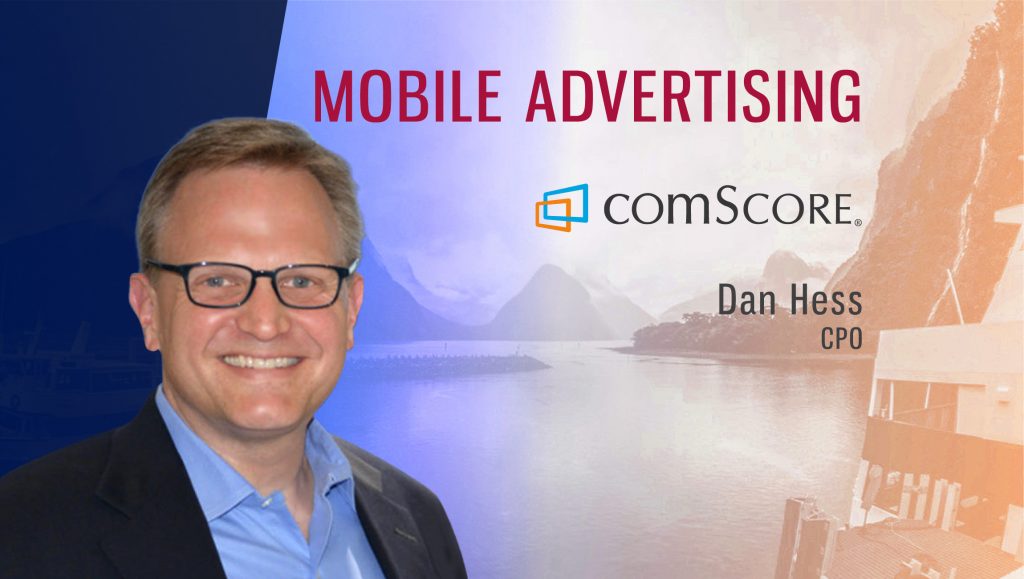
Dan Hess
Chief Product Officer, comScore
55 petabytes of data every day!
That’s the kind of data deluge that comScore works with, day after day, to ensure their customers, largely marketers and media companies can effectively navigate through every phase of the cross-platform advertising life-cycle. Dan Hess, Chief Product Officer, comScore provides a sense of what it feels like to be working with so much data and how they intend to demystify Mobile Advertising.
Tell us about your role at comScore and the team and technology you handle.
It’s probably helpful to first briefly explain our business. We’ve assembled data on a massive scale about how people consume media across all platforms, from TVs and movie theaters to mobile devices and desktops. We measure video and static content, as well as ads, traditional demographics, advanced audience descriptors like lifestyles and product ownership, and the impact that these things have on changing behaviors and attitudes. We ingest 55 petabytes of data every day. It’s a lot of data.
My organization is responsible for listening to the market to learn what our customers – such as media brands, advertisers, and their agencies – want and need today, and watching emerging trends that may change those needs in the future. We identify where what we hear and see fits with where we can help to determine the biggest opportunity for the industry and comScore. We synthesize this into product plans, requirements, and specs. And we work with our colleagues in data science, tech and other teams to craft our vast raw materials into products. Once those products are in the market, we have teams that provide ongoing support for them. We also have custom solutions teams to step in when a client needs something that a standard product doesn’t support.
Ultimately, our mission is to turn really complex raw materials into something that is simple on the surface, so our clients can more easily garner insights that help them grow their businesses – and in the process bring trust and transparency to media and marketing overall. I’m privileged to have amazingly smart, dedicated and client-obsessed teams of people here that make this happen.
What are your predictions for Mobile Advertising in 2018-2020?
Most digital ad spending is now on mobile and that share will continue to grow. But this isn’t happening in a vacuum; mobile has become the thread that connects other platforms like TV, desktops, movies, etc. Whether I’m shopping, watching a video, or ordering dinner, that mobile device is always there and almost always playing a part.
Marketers are getting smarter than ever about the role mobile plays for their specific brands and are designing experiences around that. We’ll see this manifest in higher quality, more interactive mobile content and ads – especially using video. Handoffs between platforms will be smoother than ever before. Targeting will become even more precise; we’ll see more ads than ever targeted by location, in-app or site context, and by the advanced audience descriptors that I mentioned earlier.
All of this must and will be achieved in the context of ever-tighter controls over the use of consumer data. You can expect to see more GDPR-like rules and policies beyond just those of the EU.
This all makes marketing very expensive, so it’s more important than ever for marketers to be sure they are getting maximum bang for their buck.
In practice, this means knowing how many unique people saw an ad or particular content, how many times they saw it, whether it was the type of consumer you wanted and whether it appeared in brand-safe content. Then there’s measuring whether it had an impact on sales or other activity. This is hard within any one platform like mobile. It’s really hard across multiple platforms. One of our great strengths at comScore is deduplicating this activity across platforms, such as in the Campaign Ratings product that we just announced that we will be launching in beta in September or our models that identify the lift in viewership of a show on TV resulting from a digital promotion.
How do you see emerging trends, like Artificial Intelligence, driving innovation in the mobile adtech industry?
I’m a big fan. In mobile and in our business in general, there’s an explosion of data driven by machines (mobile location, ad servers, BLE beacons, web and app usage, etc.). There’s no way humans alone can find all the meaningful signals within this noise. But AI can do it and can then also figure out what to do with what it found.
This unlocks new opportunities to extract value from the insights that companies like comScore deliver to clients. It will reduce the manual effort required, that frees up time for us and our clients to focus on the next important initiative. But even with these new technologies, the human layer remains incredibly important. Our clients still need to know that we have deep expertise and rigorous methodologies as the foundation of our products. And advertisers need to focus on developing the right creative.
Why is it important to prioritize mobile in the roadmap?
We live in a mobile-dominated world. The comScore US Mobile App Report reported that more than half of the time spent with digital media is spent via smartphone apps. eMarketer says that this year mobile will account for 75 percent of total digital ad spend in the U.S.
Looking around the world, there are also mobile-first markets such as India, where nearly 80 percent of internet users access digital content on mobile devices alone.
This is an important channel for our partners, and we’ve been investing in dramatic increases in the number of devices we measure to produce our products and services.
Which markets and industries are best suited to benefit from comScore?
comScore is already a trusted partner to many of the largest and most influential buyers and sellers of media. Our currency is used by every one of the top 10 US online properties, eight of the 10 largest media companies in the world, and eight of the 10 largest agencies in the world. We serve major TV networks, local TV station groups, consumer brands, and ad platforms. All told, we’re honored to have more than 3,500 clients that trust us to help them effectively plan, transact and evaluate media, audiences, and campaigns.
Even people who know comScore may not realize that we capture 95 percent or so of box office receipts from more than 25,000 theaters around the world. We can track audience expectations for a year before a movie release and reactions after release. This is the basis of long-standing relationships that we’ve built with movie studios and exhibitors around the world.
Finally, we provide analytical services to marketers in key verticals like automotive, financial services, travel, and pharma. As an example, for auto OEMs, we can reveal competitors that are better at converting curious shoppers to serious intenders who configure a new car. In financial services, we can benchmark competitors’ success at driving applications for loans and credit cards, and then recommend strategies and tactics to close any gaps. We’ve been delivering these types of insight for almost 20 years, and it can drive serious impact for our clients in revenue and efficiency.
What are your predictions on video for 2018-2020? How do you prepare for the disruptions in the industry?
Video consumption, in general, continues to fragment across mobile, desktop, linear TV and over-the-top (OTT). This fragmentation makes it incredibly challenging for media buyers and sellers to gain a clear picture of who they are actually reaching and how frequently across platforms. As they should, advertisers want a clear picture before writing a check. So, in the face of disruption, objective measurement can open up a lot of bottlenecks.
Again, that’s why we recently announced the beta program for our new Campaign Ratings solution. We’re going to provide media buyers and sellers with trusted, unduplicated measurement of video ad campaigns across linear TV, OTT, desktop, and mobile platforms. It’s the next frontier for video advertising measurement, and we’re thrilled with the response we’ve gotten from our customers.
Thanks for chatting with us, Dan.
Stay tuned for more insights on marketing technologies. To participate in our Tech Bytes program, email us at news@martechseries-67ee47.ingress-bonde.easywp.com
























